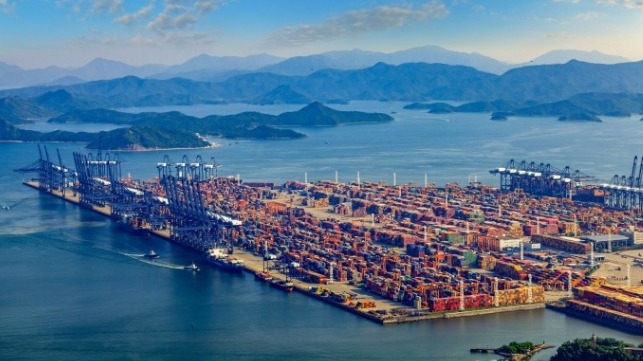China’s Yantian Container Terminal Resuming Normal Operations

After a month of disruptions due to an outbreak of COVID-19 in southern China, the operators of the Yantian International Container Terminal announced that they are resuming normal terminal operations. The major shipping lines and industry analysts however continue to warn of significant delays and backlogs that could continue to impact global supply chains for weeks or months to come.
Hutchison Ports Yantian reported that after proactive measures to control COVID-19 in the port area, the operational capacity of the terminals has steadily recovered. With the full support of relevant government departments, it was agreed that the Yantian terminal will resume full operations as of midnight local time on June 24.
Maersk at the beginning of the week had warned shippers that capacity at the eastern terminal remained at just over 50 percent and that the Yantian yard had reduced yard density to 60 percent of capacity. Export containers had been paused for six days contributing to what Maersk called the most significant bottleneck in container shipping.
Hutchinson now reports that all berths, including in the western area of the port, “will essentially resume normal operations.” The number of laden gate-in tractors also continues to increase. It will now be set at 9,000, which is up from 8,000 last week, and before that it was set at 6,000. The terminal is also accepting containers up to seven days in advance of a vessel’s scheduled arrival.
Port officials said that they would continue to implement strict measures designed to control the spread of the virus. The initial outbreak was reported on May 21 and quickly spread among the dockworkers and other elements of the port community. Officials in neighboring Shenzhen continue to report a limited number of new cases of the virus each day in the city.
“The Port of Yantian is gradually increasing productivity as more workers return and more berths reopen,” Maersk advised customers. “We welcome the diminishing queue, but schedule reliability remains compromised.”
All the major carriers have taken steps to limit the impact on their operations, diverting ships to alternate ports and working to reschedule shipments. This, however, has also led to delays at neighboring ports. Maersk told customers that it anticipated average waiting time in Shekou, Nansha, and Hong Kong between two and four days, but warned it could rise as more containerships diverted.
A total of 90 containerships from Maersk and its operating partners omitted the Port of Yantian and Shekou to protect schedule reliability. Maersk reported that 19 of its routes were being impacted by the problems at Yantian.
The operators of the terminal declined to estimate how many containers were backlogged in their yard. Experts have estimated hundreds of thousands of TEU at either bottlenecked at the yard or backed up in the supply chain coming from China’s factories.
One of China’s busiest ports, Yantian typically handles more than 40,000 TEU a day. Last fall, port officials in Yantian said that the container throughput exceeded 1.46 million TEUs in September, breaking the global monthly record for a single terminal run by one port operator.
